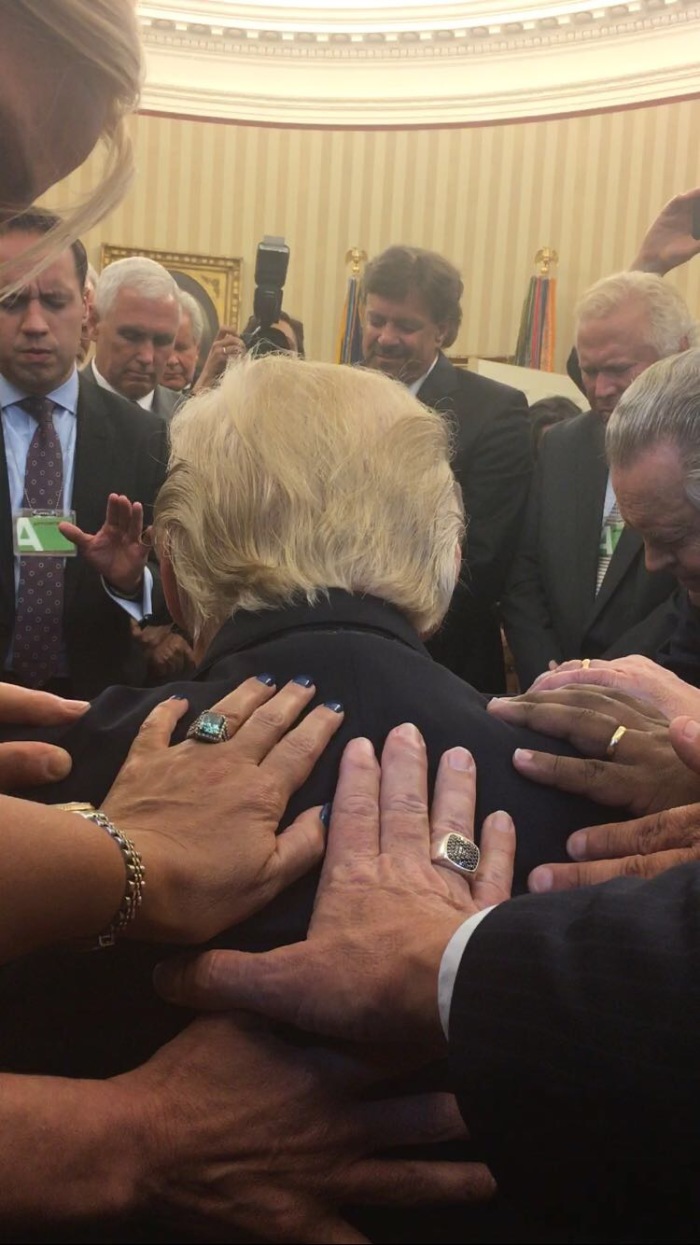Yes, Pray With Presidents, But That Photo ...

North Carolina liberal activist clergyman William Barber is criticizing conservative evangelical supporters who were photographed praying with the President and Vice President in the Oval Office.
"It is a form of theological malpractice that borders on heresy when you can p-r-a-y for a president and others while they are p-r-e-y – preying on the most vulnerable. You're violating the most sacred principles of religion," Barber explained.

It's odd for a clergyman to reject prayers for persons he believes are predators, since a primary purpose for prayer is changed hearts and redemption for the lost. Presumably Barber would not object to a similar prayer session for office holders whose policies are closer to his own. He led prayers at the Democratic National Convention last year. And prayers feature prominently in his regular "Moral Monday" protest demonstrations at North Carolina's state Capitol.
Responding to criticism like Barber's, a participant in the Oval Office prayer session explained: "Our mandate to pray for leadership is not dictated by who holds any particular office. We are called to simply pray for all people and all leadership."
Whatever the intent of the prayer session, the tweets about it by participants further politicized it, as any publicized act with any president automatically becomes political. Over 20 years ago I wrote about a National Council of Churches delegation that prayed with President Clinton in the White House during his early budget confrontation with the new Republican Congress. The visit clearly offered political solidarity at a crucial time, which was why the administration had invited their visit.
Like the conservative evangelicals who laid hands on Trump while they prayed, the NCC group of mostly liberal Protestants laid hands on Clinton, as "guardian of the nation," while they prayed he would be "strong for the task" of dealing with Congress. The NCC issued a news release about their prayerful solidarity visit, insisting there was no partisan purpose.
Perhaps the best known modern prayer in the Oval Office was led by a young Billy Graham, who with his colleagues prayed with President Truman, then gushed the details to reporters on the lawn, while Graham and his team fell to their knees to pose for photos. Truman privately pronounced Graham a "counterfeit" and avoided contact for many years, a lesson that was instructive for Graham. He thereafter tried to be more publicly circumspect about conversations with presidents, though he controversially became politically intimate with LBJ and Nixon, both of whom genuinely liked and also exploited the celebrity preacher.
Religion permeates every arena of American public life, even in our supposedly increasingly secular times. It's unreasonable and mostly undesirable to expect or advocate a clear boundary between politics and religious affairs. From America's start there have always been clergy and religious activists who politically chose sides in a public way. It's perhaps a calling for some but not for most.
But religion's public influence and Christianity's social witness might be better served if religious leaders from across the spectrum were more guarded in their spiritual interactions with public figures. Private prayer, behind closed doors, should perhaps not be photographed, described in news releases, reenacted or tweeted. Such prayer presumably has a primary audience of One, and He will listen without need of amplifying publicity.
Originally posted at Juicy Ecumenism.




























